
Everyone goes to the theater at least once in their 4 years at Jesuit. Usually, people go there for class meetings, mandatory class guest speaker events, or to watch one of the plays. But now, with Film Club’s recent use of the facility, you can also use it as a movie theater!
From Humble Beginnings
This past Friday, after school at 4:30 pm, the Jesuit Film Club pressed “play” and began watching, for the first time ever, a movie in Jesuit’s theater. Since its inception in 2020 (pun not intended; Inception was among the first movies we watched), the Film Club has confined itself to Community Time’s 30-minute periods. During these periods, the club screened selected movies in 30-minute segments over the course of a month or more. While these meetings remain integral to the Film Club and this Friday tradition has grown on its members, watching movies in such a fragmented manner simply lacks the immersion and engagement of watching a movie from start to finish. Indeed, movies were not intended to be watched in 30-minute intervals spread out over a month.
As a result, club leaders and members agreed that there needed to be a way to watch movies in their entirety, not just in short meetings that hinder the possibility of experiencing a film’s full cinematic journey. In light of this feedback, the club’s moderator, Mr. Harrington, ingeniously came up with a solution: utilizing the Melsheimer Family Theater as our club’s movie theater.
The Big Screen
The Melsheimer Family Theater is a versatile venue for various activities. It is where Jesuit hosts guest speakers, plays, large club meetings, and even optional end-of-semester exams in Dr. Moed’s and Mr. Nava’s precalculus classes. It is a beautiful facility with comfortable and expansive seating, a large stage, a robust audio system, professional-grade lighting, a near-IMAX quality projector, and electrical draping (read more about the theater here). Yet, many take our theater for granted.

The most recent renovation made only minimal structural changes in the theater (the biggest were different seats and a renewed stage) but made large strides in improving the exterior and surrounding theater facilities. Within the theater walls, however, substantial changes were made in the equipment.

The Theater’s History
In Jesuit’s early days, the school’s theater was not nearly as picturesque, and theater productions often took place elsewhere, such as the DISD Alex W. Spence Auditorium.
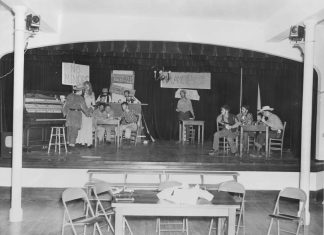
While the theater kids back then still made the most of what they had, and while their plays still typically drew great turnouts, I think it is fair to say that we should be grateful to the Melsheimer Family and other donors for enabling us to enjoy the new, beautiful facilities.
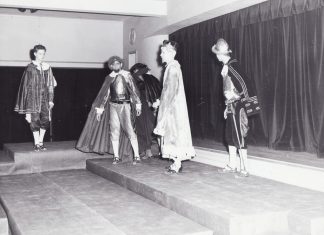
Moreover, the versatility of the theater (which was referred to as the Auditorium) had been limited by its small equipment repertoire. Therefore, the new renovation has not only benefitted anyone using the facility for plays, tests, or guest speakers; without the new pull-down screen, audio, and projector systems, the Film Club could not have used it as a movie theater. For that reason, the Film Club, in particular, thanks the Melsheimer Family and other donors who contributed to the facility’s construction.
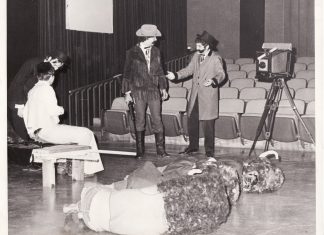
The Audio System
Of all the new equipment in the theater, the audio system received the most praise, and the leadership made sure that this was the case. Dunkirk ended up being the film we chose for the first screening, a war movie that features impressive auditory elements that we wanted to use to showcase the capabilities of the Melsheimer Family Theater. In my opinion, the immersive sound system reverberating through the room significantly enhanced the tension of the war scenes. An experience like this would not have been possible with Mr. Harrington’s B118 audio system, a headset connected to a laptop, a home TV, or anywhere else besides another movie theater.
The club members agreed. Julian Miranda ’24, who played a large part in selecting this film, described how perfect Dunkirk was as the theater’s first film:
The use of the theater for Dunkirk was amazing because Dunkirk is a film known for its complex sounds. I believe that the theater was perfect for this and I hope we do it again sometime.
Had we simply watched this during Community Time, Hans Zimmer’s music and the film’s “complex sounds,” as Julian put it, would have been stripped. This would have been a pity for a film that won the Academy Award for Best Sound Editing.
The Movie

Yes, Dunkirk gave an amazing auditory experience. However, audio alone cannot make a movie. Storytelling, settings, actors, imagery, hues – the list goes on – play a crucial part as well. As can be expected of a Christopher Nolan movie, all of these came close to perfection. However, in my opinion, the most striking and controversial aspect was the storytelling.
Note: I will try to discuss Dunkirk with minimal spoilers because I highly encourage you to watch the film whenever you get the chance. That said, if you can, I’d recommend heading over to Apple TV or Amazon Prime right now to watch the movie before reading my opinions, so you can develop your own impression of it without letting mine dictate yours too much.
Storytelling: Parallel Timelines
In the film, Christopher Nolan took a risk and went with a non-linear, montage-style story form. Taking a risk like this is not unlike him, though; in Memento, Nolan used reverse chronology to present the story of a man suffering from an extreme case of memory loss in his journey of tracking down his wife’s murderer. Inception had a structure reminiscent of a labyrinthine that artfully confuses the audience from start to finish as the characters dream within dreams within dreams (within dreams).
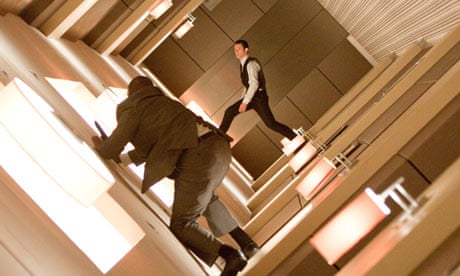
In both of these cases, Nolan used a confusing style to put the audience in the shoes of the film’s characters, allowing him to present the story in a more immersive and engaging way than typical films would. So, when, after 15 minutes, I was still confused about who was who and what was happening, I knew I was about to experience another of Nolan’s avant-garde storytelling structures.
The structure of the film went as follows: three timelines ran simultaneously, with one on land, one on the water, and one in the air. These three timelines would, at times, converge, and at other times they separated. The three settings were used to represent the three domains of war—land, water, and air—which were presented through the infantry, navy, and air force in the film. By structuring the film in such an unpredictable way, where soldiers from different regiments, divisions, and countries would constantly meet and lose track of one another, Nolan successfully communicated a characteristic of war misrepresented in so many movies: the fog of war.
The Fog of War
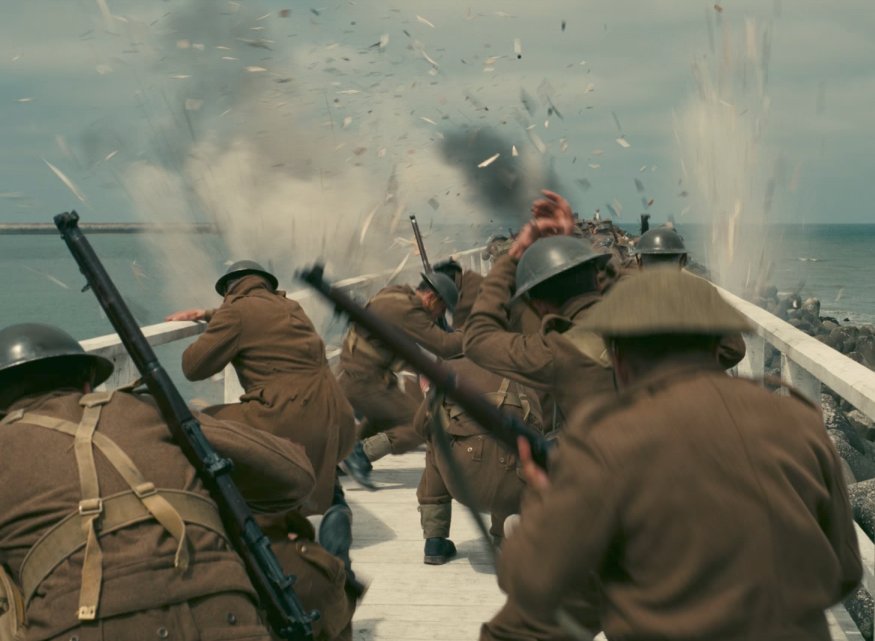
Most war movies present war in a picture-perfect way, where everyone is magically in the loop and on the same page. Additionally, stereotypical war movies tend to follow a plot along the lines of an American hero slaughtering hordes of the enemy army with little, no, or blatantly superficial obstacles that are invariably conquered. Why do they almost always seem to follow a formula like this? Because it is a formula for success. Filling a movie with action where the hero has complete control makes it appealing to everyone because everyone loves a dominant good guy wreaking carnage on a group of bad guys.
Yet, Nolan seems to have gotten tired of this unrealistic model. In a real war, there is silence, there is confusion, and there is a lot of it. For a movie, however, focusing on this would seem like a recipe for disaster. Nobody actually wants to watch a typical day in the life of a soldier, because a typical day in the life of a soldier usually doesn’t involve screaming while mowing down hordes of enemies with a machine gun (sorry, Rambo).

In reality, participants in military operations, from soldiers to generals, typically experience a sense of situational unclarity and confusion due to a combination of adrenaline, poor intel, and a limited understanding of their immediate surroundings. The term “fog of war” encapsulates this phenomenon.
Why the Battle of Dunkirk?
To depict a more realistic and typical war experience, Nolan and his team decided to center the movie around the Battle of Dunkirk. This was a very prudent choice of battles because it was not characterized by a lot of bloodshed, relatively speaking. Instead, it was characterized by anticipation, anxiety, and patience, stemming from the tense background of German troops preparing to close in and defeat the Allied troops on the beaches at Dunkirk.
Aware of the situation, the Allied troops felt desperate to find a way off the French coast, across the English Channel, and into the safety of England. However, the Allied forces did not have enough boats to instantly rescue the 338,000 men. So, the soldiers were forced to wait, knowing that German troops could move in at any moment.
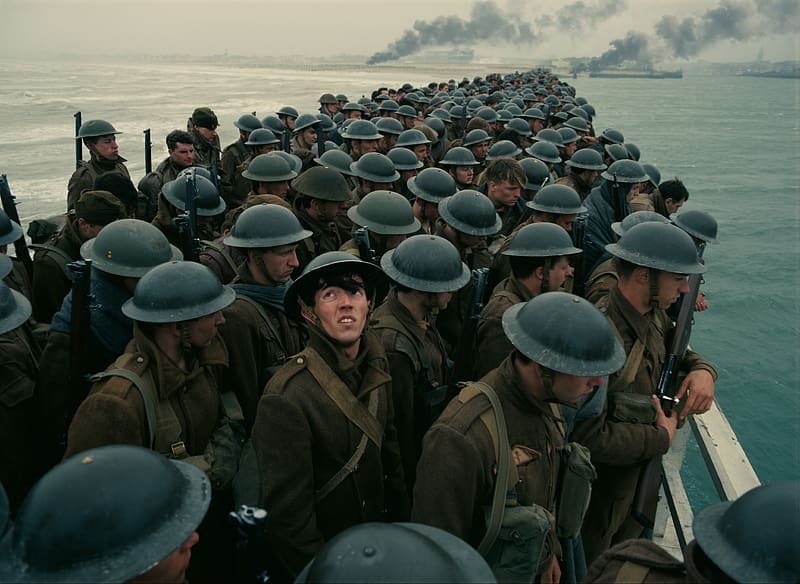
By focusing on this incredibly intense story, Nolan was able to get away with relatively minimal action. Most of the time, characters sit down in silence, sail a small boat across the sea, or try to poop in the sand. I mean, have you ever watched another war movie that shows one of the “heroes” pooping like a cat in the sand?
With these pauses, then, also came silence. From the quiet rustle of paper falling down onto a regiment in the first scene to the sound of flipping through a newspaper in the last scene, I frequently found my breath being louder than the theater’s massive speakers. And from this silence came great suspense.
Nameless Heroes
In his storytelling, Christopher Nolan portrayed the “fog of war” not only through the chaos of often disjointed timelines but also interestingly through limited character development. To be honest, I left the movie without knowing the names of any of the characters. I know that small conversations may have mentioned some names, but never in contexts intense enough or numbers high enough to stay in my memory. While this may seem to many like a sign of poor filmmaking, I believe that Nolan and his crew intentionally crafted the characters as flat. After all, Dunkirk is not a romance or drama about the experiences of specific individuals. It is a film that aims to reflect the experience of 400,000 people.
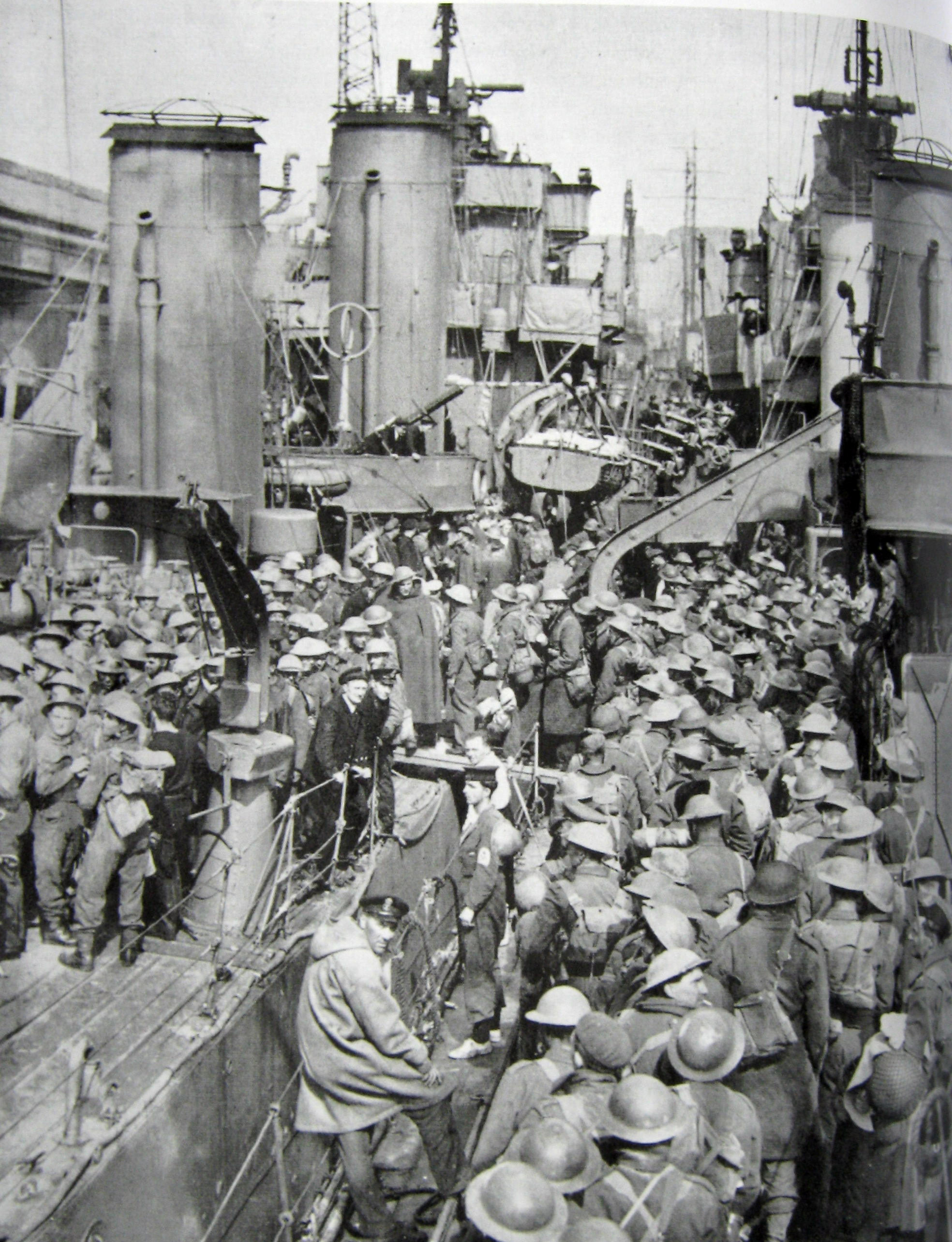
Therefore, the three characters with the most focus are only characterized insofar as they fulfill flat character archetypes: a young foot soldier, a brave pilot in the air, and a patriotic rescuer on the ocean.

To get that gist, the audience does not need to know the names or life story of each character. The audience does not need to know what happens to these three characters after the battle. We just need to sit back, watch, and imagine ourselves in their shoes for the duration of the film so that we can extrapolate an experience to the whole of almost half a million scared young men.
Concluding Opinions
Overall, by adopting a structure that mirrors the disorientation and unpredictability of war, Nolan placed me squarely in the midst of the “fog of war.” I felt immersed in the silent desperation, anxiety, and patience experienced by soldiers awaiting evacuation. In doing this, Dunkirk did something most war movies fail to do—invite the audience to empathize with the unnamed and faceless masses enduring the tumultuous events on land, water, and air.
Looking Ahead: What’s Next for Jesuit’s Film Club?
Overall, it appears that people thoroughly enjoyed this new experience and are eager for more. Ten people attended, and we had a guest appearance from Father Roy Joseph, SJ. The complimentary snacks contributed to a comfortable atmosphere, and it is clear that the students unanimously supported the idea of doing something similar in the future. For example, Daniel Garcia ’24, the original co-founder and former president, expressed his satisfaction with the Film Club’s decision to make this addition:
I thought that it was a blessing to come all together at the theater and enjoy a relaxing movie with my Jesuit brothers. I’m really grateful for the new theater renovation and for the Film Club for hosting this experience, and I hope that we can continue this tradition.
As long as I am president, Jesuit’s Film Club will continue to use the theater to host movie events after school. The club moderator, Mr. Harrington, has been supportive and hopes that we can begin screening movies after school at least once a month. These screenings will continue to take place alongside the weekly Community Time Friday meetings in room B118, where we will watch other movies well suited for 30-minute intervals. We hope to see you there!
If you would like to be added to the Film Club roster, please do one of the following bullet points. By joining the roster, you will be able to receive direct updates about future after-school films:
- Fill out this form.
- Email Mr. Harrington (jharrington@jesuitcp.org) or me (24701@jcpstudents.org).
- Reach out to either of us via RangerNet messaging.
Stay tuned to the Jesuit Roundup for more arts and film coverage!





